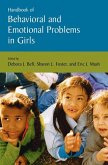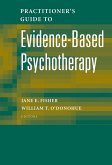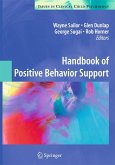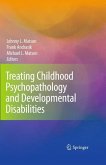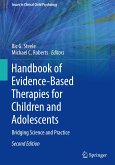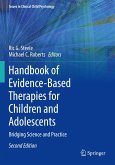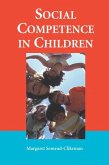Growing numbers of young people-some 10% to 20% of school-age populations-have mental health problems requiring intervention, and current policy initiatives identify evidence-based therapies as the most effective and relevant forms of treatment. By reviewing evidence-based treatments (EBTs) across a wide spectrum of conditions, the Handbook of Evidence-Based Therapies for Children and Adolescents: Bridging Science and Practice closes the gaps between children's needs and services as well as those between research, training, and practice,
Several EBT options, both proved and promising, are offered for each covered disorder and are bolstered by case examples, tables, and reference lists. Features include chapters on implementation issues such as diversity, family treatment, assessment strategies, and community settings, and step-by-step guidance for the researcher looking to gather empirical support for therapies.
With comprehensive coverage provided by numerousleading experts in the field, this volume covers the broadest range of disorders over the widest pediatric-adolescent age range, including:
Behavioral disorders, ADHD, aggression, bullying.
Phobias, panic disorders, school refusal, and anxiety.
Autism and pervasive developmental disorders.
Depression, mood disorders, and suicidal behavior.
Alcohol and drug abuse.
Eating disorders and obesity.
PTSD.
With its emphasis on flexibility and attention to emerging issues, the Handbook of Evidence-Based Therapies for Children and Adolescents is essential reading for anyone who works to address the mental health needs of children, including clinical child, school, and counseling psychologists; clinical social workers; and child psychiatrists as well as advanced-graduate level studentsin these and other related fields.
Several EBT options, both proved and promising, are offered for each covered disorder and are bolstered by case examples, tables, and reference lists. Features include chapters on implementation issues such as diversity, family treatment, assessment strategies, and community settings, and step-by-step guidance for the researcher looking to gather empirical support for therapies.
With comprehensive coverage provided by numerousleading experts in the field, this volume covers the broadest range of disorders over the widest pediatric-adolescent age range, including:
Behavioral disorders, ADHD, aggression, bullying.
Phobias, panic disorders, school refusal, and anxiety.
Autism and pervasive developmental disorders.
Depression, mood disorders, and suicidal behavior.
Alcohol and drug abuse.
Eating disorders and obesity.
PTSD.
With its emphasis on flexibility and attention to emerging issues, the Handbook of Evidence-Based Therapies for Children and Adolescents is essential reading for anyone who works to address the mental health needs of children, including clinical child, school, and counseling psychologists; clinical social workers; and child psychiatrists as well as advanced-graduate level studentsin these and other related fields.
From the reviews:
"This book provides a review of the literature on treatments for various diseases and disorders specific to children and adolescents. It specifically focuses on therapies for children and adolescents with strong empirical support and is intended to deliver a thorough review and discussion of their uses in a wide range of diagnoses. Clinical psychologists are an obvious target for this book, but child psychiatrists and other mental health professionals will also find it relevant to their work. ... superb resource for clinicians working with children." (Christopher J. Graver, Doody's Review Service, September, 2008)
"Steele, Elkin, and Roberts ... continue this highly needed job of disseminating evidencebased therapies (EBTs) for children and adolescents with Handbook of Evidence-Based Therapies for Children and Adolescents: Bridging Science and Practice. ... a book for advanced students of applied psychology, such as graduate studentsin terminal master's or doctoral programs. This book is an excellent and sharp tool for every clinician (psychologist or psychiatrist) who is in search of bridging science and practice." (Marios Constantinou, Christiana Dipli and Maria Karekia, PsycCRITIQUES, Vol. 53 (49), December, 2008)
"This book provides a review of the literature on treatments for various diseases and disorders specific to children and adolescents. It specifically focuses on therapies for children and adolescents with strong empirical support and is intended to deliver a thorough review and discussion of their uses in a wide range of diagnoses. Clinical psychologists are an obvious target for this book, but child psychiatrists and other mental health professionals will also find it relevant to their work. ... superb resource for clinicians working with children." (Christopher J. Graver, Doody's Review Service, September, 2008)
"Steele, Elkin, and Roberts ... continue this highly needed job of disseminating evidencebased therapies (EBTs) for children and adolescents with Handbook of Evidence-Based Therapies for Children and Adolescents: Bridging Science and Practice. ... a book for advanced students of applied psychology, such as graduate studentsin terminal master's or doctoral programs. This book is an excellent and sharp tool for every clinician (psychologist or psychiatrist) who is in search of bridging science and practice." (Marios Constantinou, Christiana Dipli and Maria Karekia, PsycCRITIQUES, Vol. 53 (49), December, 2008)


